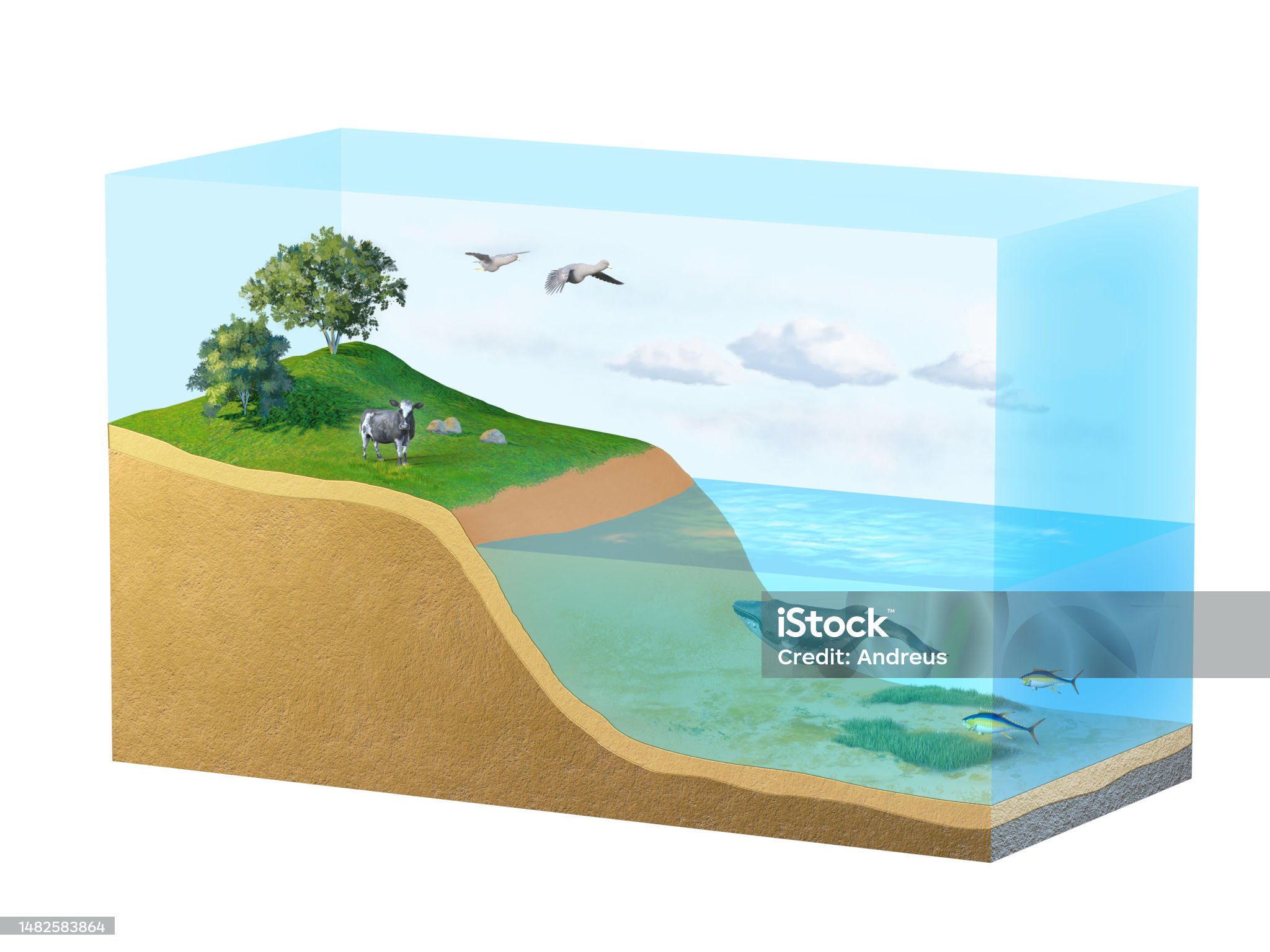Understanding Ecosystems in Environmental Studies
🌿 Understanding Ecosystems in Environmental Studies | Module 2 Guide

🔍 Introduction
Everything in nature is connected. Ecosystems are natural systems that link living organisms with their physical surroundings. This module explores how these systems function, how energy flows through them, and why conserving biodiversity is so important for the planet's health and our future.
🌍 What is an Ecosystem?
An ecosystem is a natural unit where plants, animals, and other organisms interact with each other and with non-living things like soil, air, and water. The word "ecosystem" was first introduced by botanist A.G. Tansley in 1935.
🔬 Ecosystem Components
- Biotic (Living) Components: Plants (producers), animals (consumers), and decomposers (fungi and bacteria)
- Abiotic (Non-living) Components: Soil, sunlight, air, temperature, and minerals
⚙️ Functions of an Ecosystem
- Maintains balance in food chains
- Recycles nutrients and minerals
- Supports biodiversity and habitat stability
- Drives ecological processes like photosynthesis and respiration
🌞 Energy Flow in Ecosystems
All energy in ecosystems comes from the sun. Plants capture this energy through photosynthesis and convert it into food. This energy then moves through the food chain—from producers to herbivores to carnivores and finally decomposers.
⚡ Energy Transfer is One-Way
- Energy moves in a single direction: from sun → plants → animals → decomposers
- At every level, about 90% of energy is lost as heat; only 10% passes on
📊 Models of Energy Flow
- Single Channel Model: Energy flows in one direction from producers to top consumers
- Y-shaped Model: Shows both grazing (herbivores) and detritus (decomposers) food chains
- Universal Model: Combines both grazing and detritus chains into one system
🔺 Ecological Pyramids
These pyramids visually show relationships in ecosystems by layers—starting with producers at the base and going up to top predators.
Types of Ecological Pyramids
- Pyramid of Numbers: Shows the number of organisms at each level
- Pyramid of Biomass: Based on total dry weight at each level
- Pyramid of Energy: Always upright because energy reduces as it moves up

🌱 Productivity and Nutrient Cycling
Productivity means the rate at which energy is stored as biomass in plants and animals.
📈 Types of Productivity
- Gross Primary Productivity (GPP): Total energy captured by producers
- Net Primary Productivity (NPP): GPP minus the energy used by producers for respiration
Nutrient cycling refers to how elements like carbon, nitrogen, and phosphorus move through ecosystems. These nutrients are constantly reused and recycled through processes like decomposition.
🏞️ Types of Ecosystems
There are two main types: terrestrial (land) and aquatic (water-based).
Examples of Ecosystems:
- Forest Ecosystem: High biodiversity, helps regulate climate
- Grassland Ecosystem: Dominated by grasses, supports grazing animals
- Desert Ecosystem: Harsh climate, low rainfall, drought-resistant species
- Mangrove Ecosystem: Coastal, protects against floods and supports marine life
- Aquatic Ecosystem: Freshwater (rivers, lakes) and Marine (oceans, seas)
🛡️ Biodiversity Conservation
Biodiversity includes the variety of all living things. It’s crucial for ecosystem health and resilience. Conservation aims to protect species and restore habitats.
🌍 Conservation Strategies
- In-situ: Protecting species in their natural habitats (e.g., national parks)
- Ex-situ: Conserving species outside their natural environment (e.g., zoos, seed banks)
🧠 Conclusion
Ecosystems are delicate systems that support life on Earth. Understanding how energy flows, how organisms interact, and why biodiversity matters is the first step toward sustainable living.




